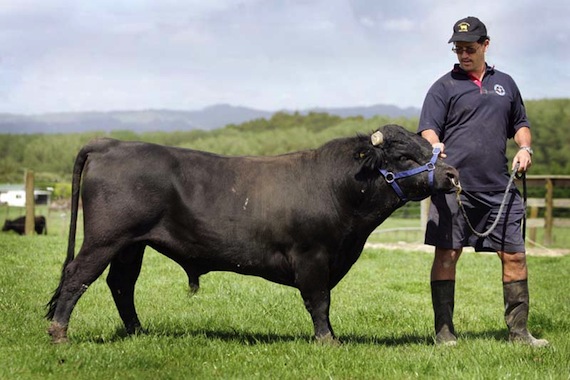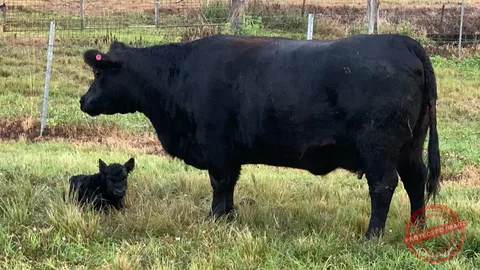If you’ve ever had a calf born on the coldest night of the year, jotted the details on a scrap of paper, and then lost it by spring, you already know how frustrating poor record keeping can be. Ranching isn’t just about feeding and breeding—it’s about keeping track of everything that happens in your herd. From births to vaccinations, weights to weaning dates, it all matters. Good records aren’t fancy paperwork; they’re the backbone of a healthy, profitable operation.
When I started out, I thought I could remember it all. How hard could it be to keep track of fifty head, right? Then calving season hit, pasture rotations changed, and before I knew it, I couldn’t remember which cow had twins last year or which bull sired the heifer I really liked. It was a mess. That’s when I realized that cattle record keeping isn’t just about organization—it’s about running your ranch smarter.
Whether you’re managing a few head for beef or running a large-scale operation, keeping accurate, easy-to-access records can save time, improve genetics, and boost profits. So let’s talk about the best methods for cattle record keeping—real tools that make sense for real farmers, not corporate systems that assume you’ve got a full-time office staff.
Why Record Keeping Matters on the Ranch
Good records help you make better decisions. You can identify which cows are producing the best calves, which ones might need to be culled, and which bulls are improving your herd. It’s the story of your ranch written in data.
Think of it like this: if you were to sell your herd tomorrow, buyers would pay more for animals with complete histories. Birth weights, vaccination dates, calving intervals—it all adds value. Record keeping isn’t busywork; it’s building equity in your herd.
The Old-School Way: Pen, Paper, and Binder
Let’s start simple. A notebook or binder system is how many ranchers have managed their herds for generations. It’s easy to set up, doesn’t require electricity, and can go with you to the pasture.
Label sections for calving, breeding, vaccinations, and sales. Use different colored pens for quick visual sorting. The trick is consistency—if you’re writing it down, make sure you always do it the same way. The downside? Paper gets lost, wet, or unreadable over time. But for small herds or folks who like doing things the traditional way, it’s still effective.
The Middle Ground: Spreadsheets
If you’re comfortable on a computer, a free cattle record keeping spreadsheet might be your best friend. You can find templates online or create your own using Excel or Google Sheets. Spreadsheets let you filter, sort, and analyze data without paying for expensive software.
I started my spreadsheet on a rainy afternoon with a cup of coffee and a goal to make sense of my herd’s history. Each column represented something different—birth date, sire, dam, weight, vaccination record, and notes. After a few weeks of entering data, I could actually see patterns forming. My best-performing cows stood out, and the underperformers were easy to spot.
If you’re new to this, start simple. Record basic info like tag number, date of birth, breed, and weight. Once that’s solid, you can add more details like calving intervals or feed efficiency. The beauty of a spreadsheet is you can make it as simple or detailed as you like.
Modern Tools: Digital Record Keeping Apps
Technology has come a long way in ranching. There are now dozens of cattle management apps designed to make life easier. These let you enter data directly from your phone while you’re out working the herd. Some even sync across devices so your records are always backed up.
Popular apps include Herdwatch, CattleMax, and Livestocked. Most offer free versions or trial periods, and some even let you import your old data. Imagine scanning a tag and instantly seeing the entire history of that animal—that’s where technology shines.
Still, not every rancher wants to rely on tech. If your ranch has spotty internet or you prefer pen and paper, you can blend systems—record data in the field, then transfer it later into your digital setup.
How to Set Up a Cattle Record Keeping System That Works
-
Choose Your Method
Decide what fits your style. If you’re comfortable with paper, use a notebook or binder. If you’re tech-savvy, go digital or use a spreadsheet. The best system is the one you’ll actually stick with. -
Create a Consistent Layout
Whether it’s columns on a spreadsheet or sections in a binder, consistency is key. Keep each animal’s info in the same order so you don’t lose track. -
Record Key Information
At a minimum, keep track of:-
Animal ID or ear tag number
-
Breed and parentage
-
Birth and calving dates
-
Health treatments and vaccination history
-
Weaning and sale weights
-
Breeding dates and sire used
-
-
Update Regularly
Set aside time each week to review and update your records. Waiting until the end of the season means you’ll forget half of what happened. -
Back It Up
If you’re using digital tools, always keep a backup. For paper systems, make copies of key pages or take photos with your phone.
Real-Life Example: My Lesson in Lost Records
A few years back, I had a great heifer calf—strong, healthy, perfect conformation. I meant to jot down her birth details later that evening. Well, “later” turned into weeks, and by the time I sat down, I couldn’t remember her exact dam or calving date.
That heifer turned into one of my best cows, but I lost her lineage information forever. It was a wake-up call. Since then, I’ve been religious about updating my records, even if it’s just a few notes scribbled in the truck.
That’s the kind of mistake that teaches you the hard way why record keeping matters.
How-To Section: Making the Most of a Spreadsheet System
If you’re going the spreadsheet route, here’s how to get started:
-
Open Excel or Google Sheets and create columns for ID, birth date, breed, weight, sire, dam, and notes.
-
Use color-coding—green for females, blue for males, red for animals sold or culled.
-
Add filters to quickly sort by birth year or weight.
-
Link separate sheets for breeding, health, and sales if you want more detail.
-
Print a summary sheet for quick reference in the barn or pasture.
A free cattle record keeping spreadsheet can be found online, but once you understand your needs, customizing one yourself gives you full control.
The Importance of Data Analysis
Keeping records isn’t just about filling out boxes—it’s about reading the story behind your numbers. When you look back over the years, patterns start to appear.
Maybe you notice one cow consistently throws heavier calves, or another struggles to rebreed on time. These insights help you make better decisions about which animals to keep, which to sell, and where to invest in feed or genetics.
Combining Traditional and Modern Methods
One of the best systems I’ve seen comes from a rancher friend in Oklahoma. He still uses a pocket notebook in the field but uploads everything into a digital log each evening. His kids helped him design a simple spreadsheet that syncs with his phone.
He jokes that he trusts his notebook more than the internet, but he admits the new system makes life easier come tax time or sale season. That blend of old-school reliability and new-school convenience is what makes his system work so well.
FAQs About Cattle Record Keeping
1. Why is cattle record keeping so important?
Because what you don’t track, you can’t improve. Records help you understand your herd’s performance, health, and profitability.
2. Can I use a free cattle record keeping spreadsheet for my herd?
Yes! Free templates work great for small to medium herds. You can customize them as your operation grows.
3. What’s the best app for cattle management?
It depends on your needs. Try Herdwatch for simplicity, CattleMax for detailed tracking, or Livestocked for mobile convenience.
4. How often should I update my records?
Ideally, every time there’s a major event—births, sales, treatments, or breeding. Weekly updates keep things manageable.
5. How can I transfer from paper to digital?
Start by entering your current herd info into a spreadsheet. From there, update new events digitally and slowly phase out paper as you get comfortable.
Keeping It Personal
Cattle record keeping might sound like paperwork, but it’s really storytelling—your ranch’s story told through numbers, names, and notes. It’s proof of your hard work and a roadmap for the future.
If you take the time to build a system that works for you, it’ll pay off tenfold in better herd performance, easier management, and fewer headaches down the road.
So, next time you’re sitting at the kitchen table after a long day, grab that notebook or open that spreadsheet. Record what matters while it’s fresh in your mind. Because in ranching, the smallest details often make the biggest difference.
What’s your go-to method for keeping track of your herd?



